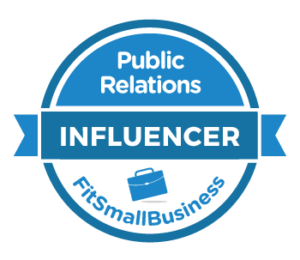I saw a MarketingProfs story about the state of generative AI in PR. The article, written by Ayaz Nanji, includes stats from a recent MuckRack survey that show growing adoption:
Some 64% of PR professionals say they are exploring the use of generative AI programs, such as ChatGPT, in their workflow, up from 28% who said the same in early 2023.
MuckRack survey via Marketing Profs
Most of the discussion about AI in PR and other creative professions is around content development: e.g., how good is the AI at generating a pitch, an article, a headline, or critiquing your press release? However, a chart in the above story showed that a good number are using it for research and for strategy & planning (58 and 43 per cent, respectively).
I have also gotten some interesting results when using ChatGPT and Bing Copilot for these things. Below I detail a few examples.
General Approach
My approach, basically, is to give AI a whirl when I find I am spending too much time on Googling and research. I usually start out thinking: “Wait, could it help here? Nah…. maybe. OK, why not try?”
What I found with these projects was that you can get some nice insight, however time saved in finding potentially useful info can be offset by the requisite fact checking.
The AI never says “I am not 100% confident in the answer” it just spits out the response; kind of like your brash and slightly drunk friend gushing the answer to a bar bet. (That said, it is amazing how quickly ChatGPT produces very cogent answers, sometimes it seems even before I hit enter).
Also, these tools do not come up with great insights on their own. Remember, they are just rehashing and autocompleting based on knowledge nuggets already in the LLM index. You can use them to discover insights that are already out there (immediately after writing this, I wondered if was really true; this led me to an interesting dialog with ChatGPT, which you can find here). You need to help AI help you via your prompts and dialog, hopefully, at the end of day leading to useful conclusions.
One more thing: for these projects, I used ChatGPT and Bing Copilot, although I know there are other good options. Both yielded similar results; ChatGPT seems faster and slightly smarter, CoPilot provides useful links and citations. I started with ChatGPT and then used the same prompts with Copilot.
Finally, it is important to avoid entering proprietary or sensitive information in your prompts. Who’s to say where the private data can wind up? Always anonymize and tread carefully.
Project One: Get me Buzz Like Apple
Our client is holding a customer event with several major announcements, and they asked us to look into how Apple builds buzz and gets coverage for their product rollout events.
Obviously, it helps to be Apple, and have their brand recognition and loyalty. Apart from that small detail, it is something that almost all consumer tech brands aspire to; perhaps something can be learned by studying their playbook.
I found I was spending a lot of time poking around on Apple’s website, and looking for announcements and press coverage around their 9/12 event last year, in which they shared news about the iPhone 15 and Apple Watch 9.
Then I thought, what the heck, why not see if ChatGPT can be of any help. I had low expectations, but it came back with some really useful information (I did some fact checking to make sure the suggestions were legit). Check it out, here’s a link to my initial prompt and the ensuing dialog.
Teaser campaigns play a crucial role in building anticipation and generating buzz for events like those organized by Apple. While Apple doesn’t typically issue traditional press releases hinting at what will be shown, they utilize various channels to tease their audience. Here are some common tactics
Quote from ChatGPT dialog
(It went on to list things like cryptic invitations, social media teasers, exclusive previews with select media outlest, etc.)
Project Two: Where can I place this byline?
We are working with a provider of retail tech for supermarkets. I wanted to get smarter about which publications accept bylines from vendors, and about their contributor guidelines.
I started a dialog with ChatGPT
Me
I work for a manufacturer of retail technology solutions for supermarkets. I am on the marketing team. Do you understand?
ChatGPT
Yes, I understand. You work for a company that provides retail tech, and your target market is supermarkets. As a member of the marketing team, your responsibilities likely include promoting the tech to potential clients, developing marketing strategies, conducting market research, and analyzing customer feedback to improve product features and appeal. If you have any specific questions or need assistance with marketing strategies or approaches, feel free to ask!
Me
Great! We have written an article that we’d like to submit for publication to industry magazines that feature news and articles for retail and supermarket executives. Publications like Progressive Grocer, Supermarket News, Grocery Dive and Retail Touchpoints. Are you following?
It went on to share a list of publications that accept bylines – most were already on our list, but it did mention a few new ones. However, ChatGPT demurred when I asked it to point me to the editorial guidelines:
ChatGPT
I don’t have access to specific submission guidelines for each publication in real-time. However, I can provide you with some general advice on how to find submission guidelines.
So I tried Copilot, which did in fact point me to editorial guidlines. It also shared tips for how to get in touch with the publications when it could not find the guidelines.
Some of the links were good, but others gave me a 404 error. And, while both AI chatbots seemed to “understand” the idea of contributed articles, they stumbled when it came to distinguishing between vendor-written bylines vs. other kinds.
In conclusion, I found the exercise somewhat helpful in reducing time to get this info, and offering more ideas about where to place such articles. I am not sure the AI tools saved that much time. There is no substitute for knowing and reading these publications, and doing the work of understanding their appetites and requirements for contributed content.
Project Three: How Can I Syndicate Research Data?
Another client is a vendor of anti-fraud technology. Their system collects data that they package into a quarterly global fraud trends report, which we announce with a press release.
I was interested in learning more about ways to get coverage for the reports, including syndication possibilites; and about out how others promote their research.
The chat sessions were kind of hit or miss, but did have some interesting information; especially in offering examples of companies that have done great jobs with branding, promoting and earning coverage for their reports (yes, being a tech giant helps).
Here is a link to the dialog on ChatGPT. The sessions went pretty much the same on this AI and Copilot. Both at first stumbled when it came to providing examples of vendor research data, instead pointing me to industry analyst and government data.
But they responded well to my pushback and sent examples of reports from other vendors that are good examples to follow.
I also learned about the limits of the content indexed (yes, I understand that ChatGPT and possibly others feature answers based on dated info, which could be a big problem depending on what you’re looking for).
Me:
I’d like to better understand how other companies promote such research. IBM, Microsoft, Cisco and Verizon issue security reports. Can you tell me which of these get the most media coverage?
ChatGPT:
Determining which of the companies—IBM, Microsoft, Cisco, and Verizon—receives the most media coverage for their security reports would require access to specific data analytics or media monitoring tools that track coverage across various outlets. Without access to such tools, it’s challenging to provide a definitive answer. However, we can make some general observations based on the reputation and visibility of each company in the cybersecurity industry.
No access to media monitoring tools? I guess Meltwater, Cision and others can rest soundly for now. And the general observations were, well, pretty general.




Nice post. I was especially interested in the last question of your first exchange, about whether it can produce novel insights. I liked it’s cyber-humility in that regard, and was somewhat relieved by the answer.
Curious – did you use Chatgpt 4 or 3.5 for these exchanges?
Also, a completely irrelevant and at the same time unimportant question – what is your posture on being polite when conversing with bots? I noticed you fall into the same habitual courtesies I do, which I’ve been trying to avoid lately. Do you think the creators of these things will be penalize me for my directness? I was hope to save my please and thank yous for the sentient. 🙂
I used ChatGPT 3.5. Do you think 4 would be better for this kind of inquiry? Yeah I err on the side of politeness, especially when I think I might share the chat with others. No chatbots were harmed in the creation of this post.
That last question by the way also addressed the issue of potential plagiarism.